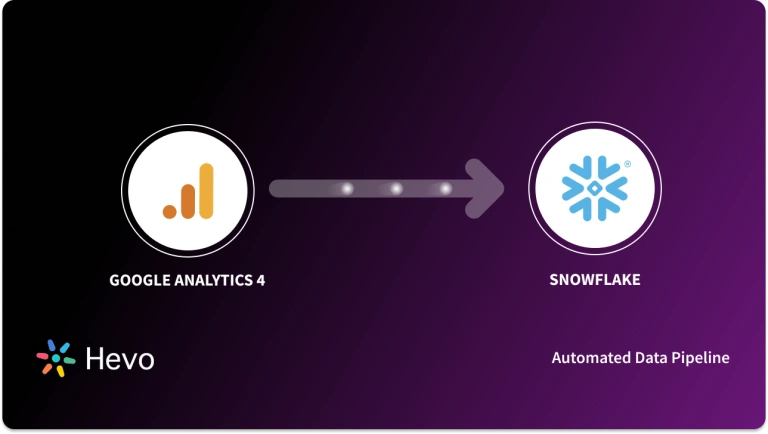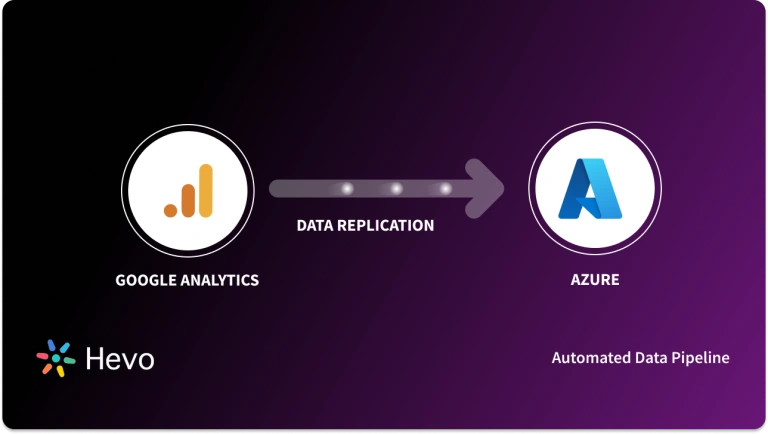Google Analytics is a popular web analytics platform that provides both real time analytics. However, replicating data from Google Analytics to Amazon Aurora offers several advantages. First, it enables you to obtain a centralized data repository where you can combine data from multiple sources. Second, it provides a high-performance and scalable database, allowing for complex queries and deep analysis of large datasets.
Connecting Google Analytics to Amazon Aurora brings together the power of comprehensive web analytics and a high-performance database, driving data-centric decision-making. This integration also allows you to perform high-level analysis, identify trends, optimize marketing strategies, and enhance customer experience.
This article provides two approaches to integrate Google Analytics and Amazon Aurora. While each approach has its advantages and limitations, you should choose the one that aligns with your requirements.
Method 1: Move Data from Google Analytics using CSV Files.
Manually export your Google Analytics data as CSV files and upload it to Amazon Aurora.
Method 2: Use Hevo to Connect Google Analytics to Amazon Aurora.
With Hevo’s no-code platform, automate your Google Analytics data transfer into Aurora seamlessly.
Table of Contents
Method 1: Move Data from Google Analytics using CSV Files
The method of moving data from Google Analytics to Amazon Aurora includes the following steps:
Step 1: Export Data From Google Analytics
You can export a Google Analytics report as a CSV file. To do this:
- Sign in to your Google Analytics account.
- Navigate to the specific Report or Data View that you want to export as a CSV file.
- Click on the Export or Share button in the top right of the report. This will open a dropdown menu with export options.
- From the export menu, select the CSV option.
- Select the location and click on Download to initiate the download process.
The CSV file will be saved to your specified location.
Note: Google Analytics allows you to export a maximum of 5k rows of data per CSV file.
Step 2: Upload the Data to an Amazon S3
Now, ensure that the CSV files are correctly formatted and organized according to the structure of your Aurora tables. The column names and data types should match the corresponding table schema in Aurora.
Once you’re done formatting, upload your CSV files to an S3 bucket using the Amazon S3 console, AWS CLI, or any S3-compatible tool.
Here we are using AWS CLI. Use the aws s3 cp command to copy the CSV files to S3. The basic syntax is as follows:
aws s3 cp <csv_file_path> s3://<s3_bucket_name>/<destination_folder>/Replace <csv_file_path> with the CSV file path on your local machine, <s3_bucket_name> with your S3 bucket name, and <destination_folder> with the desired path within the bucket where you want to upload the CSV file.
Step 3: Upload the Data to Amazon Aurora
Replicating CSV files data from the S3 bucket to the Aurora database involves the following steps:
- Create an Amazon Aurora DB and Target Table: Run the CREATE TABLE command to set up an Amazon Aurora table instance if you don’t have one.
- Generate an AWS IAM Role: To allow Amazon Aurora to access the CSV file in S3, you need to create an AWS Identity and Access Management (IAM) role with the necessary permissions to read from S3. Ensure that the IAM role has appropriate permissions to access the S3 bucket and the CSV file.
- Choose a Data Loading Method: There are several ways to migrate CSV file data from the Amazon S3 bucket to the Aurora database. Some of them include:
- Using SQL Statements: Use LOAD DATA FROM S3 SQL statement to import the CSV data into your Amazon Aurora tables. Here’s an example:
LOAD DATA FROM S3 's3://your-bucket-name/file_name.csv'
INTO TABLE table_name
FIELDS TERMINATED BY ','
LINES TERMINATED BY '\n'
(column1, column2, column3);
Replace ‘s3://your-bucket-name/file_name.csv’ with the S3 path of your CSV file and adjust the table name, column names, and delimiters based on your data.
- Using AWS Database Migration Service (DMS): DMS is a fully managed service provided by AWS. It facilitates the migration of databases, either from on-premises or cloud-based sources, to various AWS database services. If you’re using DMS, you can quickly set up an AWS DMS task to move and load data from S3 into Aurora. Configure the task to read data from the S3 bucket and map it to the target Aurora tables.
- Using AWS Glue: AWS Glue is a fully managed data integration service that enables you to move and integrate data from multiple sources to destinations. If you’re using AWS Glue, create an AWS job to extract CSV file data in S3 and transform it if required. Next, you can load it into the Amazon Aurora tables using the JDBC connections.
Depending on the chosen method, you can run the SQL statement, execute the DMS task or Glue job to initiate the data loading process. By following these steps, you will successfully establish Google Analytics Amazon Aurora integration process.
This method is beneficial when you need to perform a one-time migration from Google Analytics to Amazon Aurora, using CSV files offers a convenient and straightforward solution.
Limitations of Using CSV Files to Move Data from Google Analytics to Amazon Aurora
While there are benefits in using CSV files for data migration, it’s important to consider the limitations associated with this approach.
- Lack of Automation: Using CSV files to transfer data from Google Analytics to Aurora lacks automation due to manual data exporting, cleaning, and loading. Owing to the manual intervention, this process introduces a delay in data availability for real-time analysis in Aurora.
- Row Limit: You can only export data up to 5K rows as Google Analytics imposes a row limit per CSV file. If your data exceeds this limit, you will need to export the data in multiple files or apply filters to narrow down the data set. This can severely impact the data accuracy of the analysis.
To export larger data sets or overcome these limitations, here’s a simple alternative!
Method 2: Using No-Code Tool to Connect Google Analytics to Amazon Aurora
With a no-code tool, you can bypass the restrictions imposed on the CSV file method and retrieve the desired data flexibly. Such tools offer several advantages like:
- Faster Implementation: No-code tools provide a visual interface and pre-built connectors that streamlines the data migration process. This eliminates the need to write complex code and the time required for implementation compared to traditional coding approaches.
- Lower Development and Maintenance Costs: By eliminating the need for custom code development, no-code tools can significantly reduce development and maintenance costs associated with building a data pipeline.
Hevo Data is one such fully automated data replication tool that can assist you in swiftly building Google Analytics to Amazon Aurora pipeline. It provides a reliable data pipeline solution that allows you to capture and process data in real time. You can use Hevo’s wide range of pre-built connectors to quickly extract data from various sources and load it into a destination of your choice.
Here are the steps involved in migrating data from Google Analytics to Amazon Aurora using Hevo Data:
- Configure Google Analytics as Source
- Configure Amazon Aurora as Destination
You’re done! This two-step process establishes a connection between Google Analytics and Amazon Aurora in a handful of minutes.
Hevo’s Google Analytics connector has a default pipeline frequency of one hour for data replication. The minimum pipeline frequency is 15 minutes, and the maximum is 24 hours. However, you can set a custom frequency range between 1-12 hours.
Check out some of the reasons to choose the Hevo Data platform for your data integration needs:
- Fully Automated: Hevo adopts a no-code or low-code approach, allowing you to configure and manage data pipelines without writing extensive scripts. It offers a simple interface and 150+ pre-built connectors, enabling you to set up data pipelines in a straightforward form.
- Data Security: Hevo adheres to industry-standard security and compliance practices. It follows security frameworks like SOC2, GDPR, and HIPAA to ensure the highest level of data security.
- Drag and Drop Transformations: Hevo offers a user-friendly drag-and-drop interface with built-in transformations to format data quickly. Additionally, you can use Hevo’s Python interface for custom data transformations. The platform also supports postload transformations after data is loaded into the warehouse.
- Live Support: Hevo offers customer support through various channels like email, chat, or documentation to assist you with data integration and migration needs.
What can you Achieve by Migrating Data from Google Analytics to Amazon Aurora?
Google Analytics and Amazon Aurora integration can provide several advantages and enable various use cases. Here are some of them:
- Moving data from Google Analytics to Aurora can help in identifying the highest demographic group of users for your particular product feature. This helps you to focus on optimizing marketing strategies by targeting the right customer category. You can also personalize user experiences and allocate resources effectively based on the identified demographics.
- By centralizing data into a database, you can combine Analytics data with other relevant sources, like marketing spends and cash inflow data. This allows you to gain a comprehensive understanding of your marketing strategies and their impact on revenue generation. For instance, you can analyze the correlation between marketing spending and customer acquisition to optimize overall marketing efforts.
- Analyzing customer behavior data from Google Analytics combined with other sources in Aurora allows you to uncover patterns, trends, and correlations. You can understand how different customer segments engage with your website, their conversion rates, average order values, or lifetime value. This information helps in identifying the most valuable customer segments.
Conclusion
Whether you’re aiming to enhance customer experience or improve an organization’s services, Google Analytics to Amazon Aurora migration should be a go-to approach. Connecting Google Analytics to Amazon Aurora provides you with greater control, flexibility, and integration possibilities for analyzing and leveraging your data. The two approaches to replicate data from Google Analytics to Amazon Aurora are by using CSV files and Hevo. The initial approach requires manual intervention, making it time-consuming and susceptible to errors. It also has limitations regarding the CSV file size. However, the no-code approach with Hevo allows you to automate the replication process. With its seamless integration, Hevo empowers teams to focus on analysis and decision-making rather than following manual data extraction and integration tasks.
It has pre-built integrations with 150+ sources. You can connect your SaaS platforms, databases, etc., to any data warehouse you choose, without writing any code or worrying about maintenance. If you are interested, you can try Hevo by signing up for the 14-day free trial.
Visit our Website to Explore Hevo










